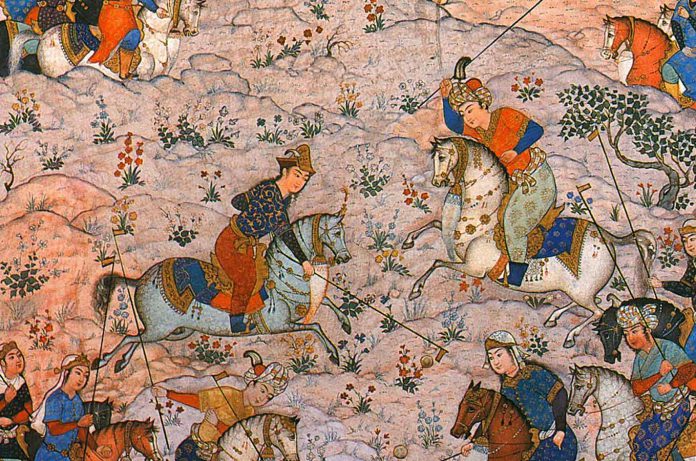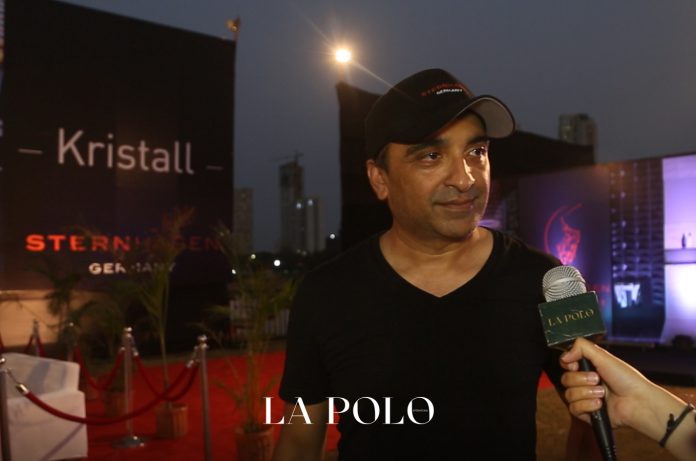Polo has been the heart and soul for any passionate equestrian and that has been the case since the inception of the ‘Sport of Kings’. It is common knowledge that the game has been tested by the trials of time for more than two millenniums, making it one of the oldest games of the world. The exact time of when the game came about are still unknown but almost all the archaeological findings have pointed out the specifics of the era and place of its inception: the Persian Empire, but other ancient Asian empires were also linked to the game.
The possibilities of the game’s inception in China were ruled out with the discovery of an early account by Ferdowsi, where the Persian poet romanticizes an international match between Turanian force and the followers of Syavoush, a legendary Persian prince from the earliest centuries of the Empire
The Aryan tribes of the Middle East are credited with being the first tribal to strike the ball with the mallet. Some authors date the sport to as early as the 5th century BC, incepted by the Median (Aryan) tribesmen. The horse-mounted tribesmen are speculated to draw the game as a leisure activity.
It is evident that with the increased use of light cavalry, made popular by the Aryans, preached the sport throughout the Asian continent, in places like the Asia Minor, China, and the Indian sub-continent.
An early inscription found in a Kashmiri cave boasted the significance of the ‘Sport of the Kings’ in the bygone era: “Let other people play at other things. The king of games is still the game of kings. “ The game was p
resent during one of the most significant occurrences in Asian history: Alexander’s conquest. At that time, the Persian Empire was helmed by one of the strongest rulers they ever had: Darius III. Darius, saving the Asian continent against the brutally strong Macedonian and Greek armies was boastful even in front of a probable defeat. In their one of their regular scuffles, Darius sent Alexander a chaugán stick and ball, which was a sarcastic reference to Alexander’s immaturity and inexperience in war and diplomacy.
Alexander, however, came up with an even greater response: “The ball is the Earth and I am the stick.”
However, Polo had been extremely popular in Persia even during Darius’s grandfather’s reign. To back the claim, historians point to drawings dating from the time of Darius I (522-486 BC) in which a horseman is depicted holding a long mallet in one hand. The game called ‘Chaugan’ in its historic iteration was played with hundreds of players in each side, mimicking war for their extensive cavalry. Omar Khayyam, one of Persia’s greatest poet, wrote a verse dedicated to the great game:
“In the cosmic game of polo, you are the ball
The mallet’s left and right becomes your call
He who causes your movements, your rise and fall
He is the one, the only one, who knows it all.”
As the years progressed, so did the sport, resembling more to the modern version than the ancient era in the medieval century. Polo in the Middle Ages (1000-1300 AD) was a very different sport than the one we know now. The game consisted of two 30-minute chukkers, riders used only one horse, and the game was only stopped for serious injuries. If the ball went out of bounds, it was immediately thrown back in by a spectator. Fouls did not exist and every man played for himself. This style of play, combined with the stone goal-posts entailed serious injury and death was not rare on the polo field.
The ‘Sport of Kings’ was still widely romanticized as poets still used it as a setting to put out their magnificent creations. In the 13th century, poet Nizami Ganjavi wrote an epic love story based around polo matches between King Khosrow II Parviz and his courtiers and the beautiful Shirin and her ladies-in-waiting. In this ancient love story, King Khosrow kills his rival, Farhad, for the affections of Princess Shirin. Khosrow embarks on long journeys, physically and spiritually, before returning to his love, marrying her, and baring a single son with her. His son eventually murders him, and his wife ends up committing suicide over the body of her dead husband. This epic love story influenced many Persian authors that followed Nizami Ganjavi.
The Polo culture took a major hit with the invasion of the great Khan of Mongolia, Genghis Khan. In his world domination campaign, Genghis Khan led his hordes from the North to conquer all the Iranian realm and Asia Minor. If his followers had not already played the game, they certainly learned it from the Iranians.
The new era hailed by the Mongols saw some iteration to the game of the Persians. The fields were often longer and narrower. Teams were frequently much larger than the four-a-side standard of today. The game was often started with the ball placed at midfield and the two teams charging one another from opposite ends; sometimes the ball was thrown into the air and hit towards the goal to start a match. Mallet shapes and sizes were exclusive to their owner.
In the modern era, the sport had still been popular until the 1979 Islamic revolution toppled the Shah of Iran. The game was banned by the rebels and even the mention of Polo would have served enough to get you into trouble.
Polo was mounted back into the Iranian mainstream by supreme leader Ayatollah Ali Khamenei, who encourages all sports deemed to have Iranian roots. The reincarnation of Polo was largely due to the sense of nationwide “Iranian Identity” that is held synonymous with the sport. A unanimous polo fan hailing from Iran commented “In the Islamic republic, it is better not to say that polo is the sport of the nobility. The authorities encourage the game because it was born in Iran," said one polo enthusiast, who asked not to be identified.
It is commonplace to observe a large poster of Khamenei towering over the field at the polo club, bearing a clear message that urges Iranians to engage in "sports that are homegrown such as polo which is Iranian".




